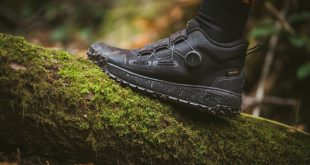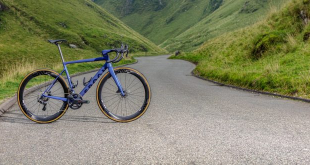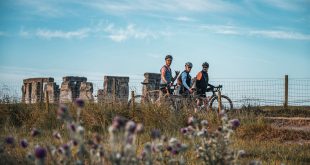Mountain bikers who ride in Scotland’s forests are being encouraged to take extra steps to safeguard wildlife and the environment in Scotland’s wild places.
Forestry & Land Scotland (FLS) has launched the ‘Protect Scotland’s Wildlife’ campaign, supported by research, to combat the effects of human behaviour on forest ecosystems during the summer months.
FLS environment rangers say they have come across multiple unofficial mountain bike trails in various forests in Scotland, disturbing ecosystems.
A network of these trails have been found through Achray Forest in areas of mature, thinned conifers. FLS says these have caused “disturbance” to forest raptors such as buzzards, sparrow hawks, red kites and goshawks.

A similar scenario has been found in Dunardy Forest near Lochgilphead, where a trail passes immediately below an osprey nest tree. Ospreys are known to abandon their young for periods when a threat approaches too closely and consistently to the nest. This can cause the chicks to fail as a result of exposure to the elements.
FLS’s campaign aims to raise awareness of the unintended consequences that can be caused to wildlife and the environment by people participating in activities in Scotland’s forests and wild places, without taking sufficient care.
In May, FLS published the results of research that asked people in Scotland how aware they are of the potential for their activity to disturb wildlife. The survey found that:
– Nearly 14% of those surveyed* visit Scotland’s forests to participate in mountain biking.
-Nearly 6 in 10 (59%) of those surveyed*, admitted they’re not aware of the breeding and nesting seasons of birds and other wildlife in the areas they visit.
-Almost 7 in 10 (69%)* “leave FLS forests and destinations as they found them” despite widespread awareness of the Scottish Outdoor Access Code.
-Around 4 in 10 (38%)* said they don’t stick to designated paths and tracks; just over 2 in 5 (41%)* hadn’t considered the impact of lighting fires and nearly half (46%)* don’t think about how much noise they’re making so that they don’t disturb wildlife nor how close they get to wildlife when taking photos (49%)*.
-Almost 4 in 10 people (36%) have witnessed or taken part in behaviour that looking back on it, might have been harmful to wildlife.

FLS says that people are increasingly seeking out places that are ‘off the beaten track’ not realising that their hobby can disturb wildlife in the area they visit.
For example, birds that nest at the edges of lochs can be easily disturbed by those enjoying water sports, while birds that nest in the treetops can be driven off nests by activity on the ground that’s too close by.
Collecting deadwood off the forest floor for a small campfire can also disturb delicate environments and ecosystems.
Read more: Specialized and Giro the most clicked brands on Cycling Weekly and Cyclingnews
Speaking about the campaign, Colin Edwards, national environment manager at FLS, said: “Enjoy yourself in Scotland’s forests and wild places but please be mindful of how your actions impact on birds, animals and sensitive habitats.
“Help us to protect what we’ve got, before it’s gone and always follow the Scottish Outdoor Access Code – ‘leave no trace’, take responsibility and don’t linger if wildlife is disturbed by your presence.
“None of us set out to deliberately cause harm but sometimes it can be thoughtless behaviour that can cause problems that then ripple out.”
 BikeBiz Bicycle and cycling retail news
BikeBiz Bicycle and cycling retail news




